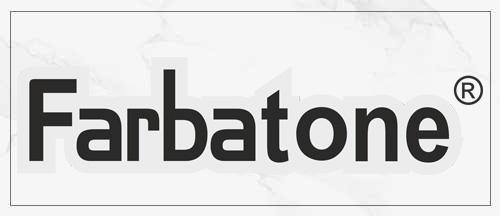INTRODUCTION
General
In the automotive industry two kinds of glass enamels are used, laminated and toughened. Toughened products are used for side lights, back lights and sunroofs; laminated products for windshields.
Side Lights
The side lights are in fact the less technical demanding with respect to the glass enamel. Semi-mat shine and printability on both the air and tin side of the glass, without any change in color are the main characteristics of this kind of glass enamel. There are heavy metal-free glass enamels in all kind of media systems available for side light printing, but also side light designers are more and more requiring complex bending. Again non-stick properties of the glass enamel are becoming more important. The tendency to use conductive pastes on side lights is already noticeable(burglar alarms and antennas).For the short term the enamel for side lights will need a fair amount of research and development work in order to live up to the new requirements.
Back Lights
The back light is traditionally the most complex piece of glass in the car. It can have a very complex shape and therefore the enamel must have very good non-stick properties, as the glass is bent by a press at about 700 ℃.A large amount of black enamel is used for obscuring and styling aspects. The glass enamel has to be overprinted with a conductive ink for the defrosting/defogging circuit. The glass enamel has to hide the silver bus bar (when seen through the glass).The strength of the soldered electrical connectors onto
PRODUCT CHARACTERISTICS
The core range exists of 3 products, which covers a wide firing range(680-700℃)and has very good anti stick properties. For special applications we can offer two others, which have different In general it can be said that it has a neutral black color (a-and b-value close to zero),is very opaque, has very good silver hiding under intense light and has very good non-stick properties.
Characteristics
The main characteristics are:
Pb & Cd free
Bismuth based
Silver hiding
No blue discoloration when over fired
Wide working range
good acid resistance
Can be used on tin & air side(sidelights)
Tempering Temperature:
680~700℃Average Particle Size:
5 ~ 6 um
Printing Environment:
It is very important to keep the printing environment clean and good environment can bring good printing result. The room temperature should be control at 25±2 ℃, humidity at 60% and make sure no dust in printing.
| Common Enamel | NO. |
| Black (laminating) | JL-A1-002 (glossy) |
| Black (side/rear) | JL-A1-001(glossy) JL-A1-006 (matte) |
Paste-Oil Ratio:
Powder lot: Varnish (SD-11) = 1:0.25~0.3
Coefficient of Thermal Expansion (CTE):
(85~95)*10 -7/K-1(50-300℃)
| Environmental-Friendly Enamel (LEAD-FREE) | NO. |
| Black (laminating) | LF-A11-002(glossy) |
| Black (side/rear) | LF-A11-001(glossy) LF-A11-006(matte) LF-A11-003(silver hiding) |
Paste-Oil Ratio:
Powder lot: Varnish (SD-11) = 1:0.25~0.3
Coefficient of Thermal Expansion (CTE):
(85~95)*10 -7/K-1(50-300℃)
The viscosity is controlled 300-500 pa.s (Rion (VT-04)/24℃) out of factory. If paste is adhered on the screen when printed, we suggest adding a small amount of thinner (SD-32) into the paste to adjust the viscosity and ensure a sustained printing. The viscosity should be controlled at 180±20 p a.s (Rion (VT-04)/24℃) if using printing machine, and 100-150 pa.s (Rion (VT-04)/24℃) by hand printing.
Screen Printing
Standard printing conditions 200~250 of Mesh
Minimum wet layer/thickness required of 24µm to obtain perfect silver hiding.
Storage
Enamel should be stored in its original package preferably tightly closed and in a clean dry place at 5~25℃.Store material away from heat and direct sunlight .When storing more than one batch, use first-in and first-out system. Cold pastes should always be shaken well prior to use. This product should be used within 12 months of production date for optimum results.
TEST
Acid durability
Immerse d the fired sample partly in 0,1N H2SO4 at 40℃,during 24 hours. Clean afterwards with water and dry the glass.
Grade 3
Al kaline durability
Immersed the fired sample partly in 0,1N NaOH at 40℃,during 24 hours. Clean afterwards with water and dry the glass.
Grade 3
Water durability
Immersed the fired sample partly water at 50℃, during 10 days. Clean afterwards with water and dry the glass.


